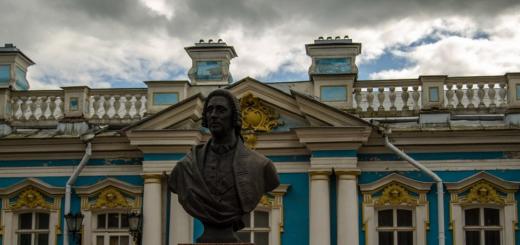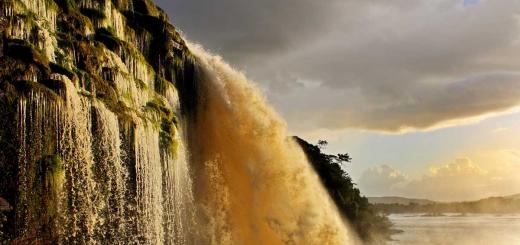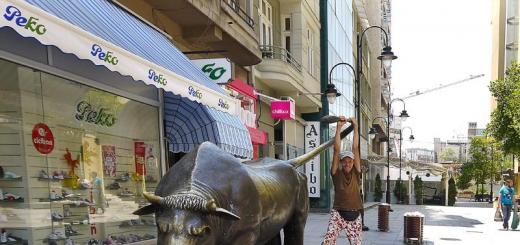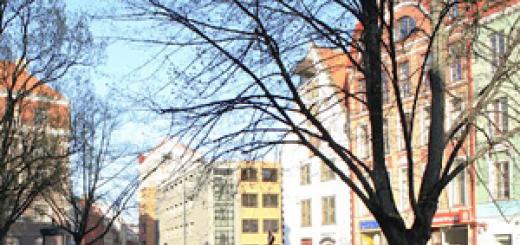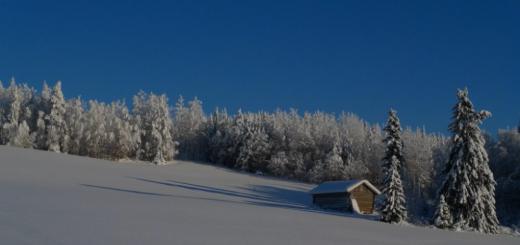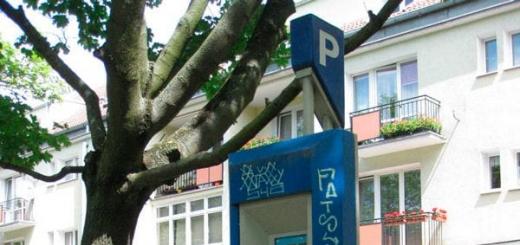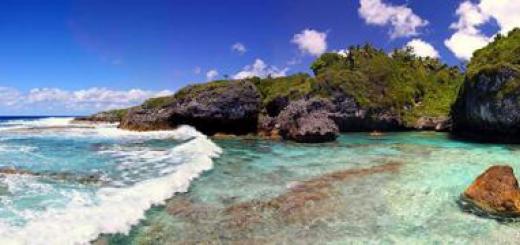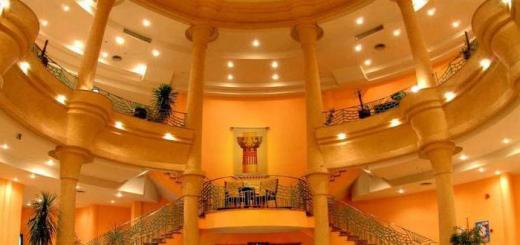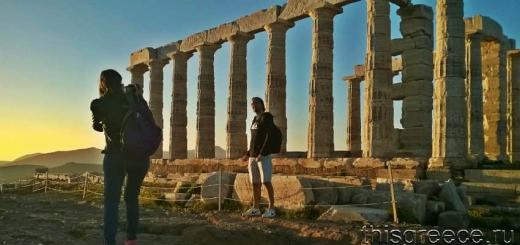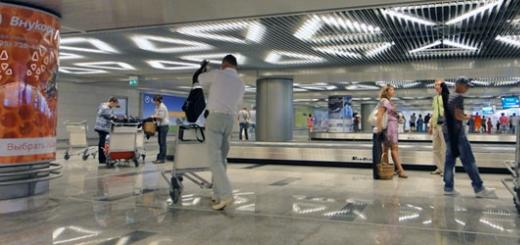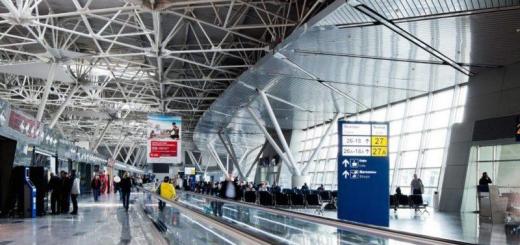My travel companion Maxim, an ambulance doctor and bodybuilder, suggested that we go to Macedonia together. I agreed without thinking, because by nature I am inclined to quick decisions. As a result, Maxim refused the trip. Well, your humble servant, not having the habit of turning on the "reverse gear", found himself in Macedonia alone.
But despite the lack of a direct flight, I still highly recommend visiting this beautiful Balkan country. Those who do not like connecting flights can get to Skopje from Sofia by road. Four hours' journey is not that far, but a Bulgarian visa is required. The second option is via Belgrade, but the journey from there will take almost 6 hours. I advise you not to bother and fly to Skopje on "Turks", as I did. Turkish Airlines offers transit flights through Istanbul with a good connection.
"Turkishi" have recently been flying from Vnukovo. Traveling by car in Moscow to any airport, and even from the other end of the megalopolis, is almost always a risky occupation, it is not long to be late for your flight. And I took the Aeroexpress train from the Kievsky railway station. 38 minutes from the center of the capital - and you are there. It was also nice to see the updated platforms at the station. The last time I was here fifteen years ago. It is gratifying when something changes for the better.
To go by train, in my opinion, is much more comfortable and interesting than by car.
Vnukovo Aeroexpress differs from the Sheremetyevo and Domodedovo Aeroexpress in that at the end of the journey it “goes into the ground”. The platform at Vnukovo is underground, which is very original.
Today, there are already three main airports in the capital that have rail links with the center of Moscow. Aeroexpress is definitely preferable. Indeed, unlike a taxi, for example, you do not need to calculate the time with the so-called reserve, fearing possible traffic jams.
I’m already too lazy to get my camera at transit and arrival airports, and I’m tired of duty-free, so photographs on trips usually begin in the first excursion moments.
On these boats you can go on an excursion on Matka Lake.
I have always been interested in the Balkan languages. As you know, there are 7 independent states on the territory of the former Yugoslavia: Serbia, Montenegro, Croatia, Bosnia and Herzegovina, Slovenia, Macedonia and Kosovo.
From the point of view of linguistics, only Slovenes and Macedonians have their own languages: the so-called "Slovene" and, accordingly, Macedonian. Next: Kosovar Albanians speak Albanian. But Serbs, Croats, Montenegrins and Bosnians, in fact, have a common language - Croatian (aka Serbian). During Tito's reign, the Serbo-Croatian language was the national language of Yugoslavia.
But after the collapse of the country, linguistic differences began to be deliberately introduced in Serbia, Croatia and Bosnia and Herzegovina. The political forces interested in making the peoples of the former Yugoslavia irreconcilable needed to divide its population along ethnic lines, including linguistic ones, so that reunification was impossible.
The difference is artificial. But all the Yugoslav languages are related by their Slavic roots. And Russian is not a stranger here either. In Macedonia, if you speak to the locals in Russian, the chance of being understood is great. Although it is possible in English. Young people speak it quite well, and sometimes even very well.
This sign says that fishing for trout is prohibited.)
Well, we got to the Church of St. Andrew. According to legend, during the war between the Serbs and the Ottomans, there was a tavern on this place. And one day in 1392, the brother of the prince Marko - Andrei - came here after the battle.
Marko, meanwhile, remained outside waiting. There were Turks in the tavern. They killed Andrey. And the prince, suspecting something was wrong, entered there with his retinue and took revenge on the Turks, destroying them all to one.
The church still keeps on its walls the handprint of the prince Marko.
The church was built in 1389.
The Red Bull drink sponsors the fish at Lake Matka)).
There is a trail along which you can make a 6-kilometer voyage along the river. I walked only a short distance, and on my way I came across such a monument to a climbing carbine. Alas, on trips, I almost always have limited time, so I preferred a motorboat to a long walk.
We sailed into the Vrelo cave. On the way, near the very shores of the lake, we came across quite interesting buildings. Something like a flop for fishermen. A "marching" option, at the same time with very attractive conditions. Only 20-25 squares of land. Above there is a mountain. Below is the lake. It is impossible to reach them by land.
As we sailed, a misty shroud spread over the lake.
And then the boat moored to the pier. And soon we will go down to the Vrelo cave. She is one of the deepest in the world. Scuba divers from Italy explored it to a depth of 220 meters. But the cave seems to be bottomless, and the exploration continues.
The water in the river is unusually clear, and when you swim it is interesting to observe the bottom relief.
For some reason, the diagram of this cave at the entrance reminded me of pictures from the times of the USSR.
Electricity in the cave is supported by a generator, which is "disguised" a few meters above the entrance.
Stalactites and stalagmites were created here for billions of years. I used to always confuse what is what, until I heard one wonderful rule: stalactite grows from the ceiling, like the letter "T", and stalagMite grows from below, like a beech "M". I figured out this simple thing for myself and I am no longer mistaken.
People are so arranged that they give everything their names. The caves and their contents are no exception. Someone called this stalactite a "bump", and then the whole hall became a "hall of bumps".
And greet you, friends! At the moment, our flight to Turkey is delayed by as much as an hour and a half, so I have time to continue the story of our adventures in the Balkans.
Do not be discouraged about the fact that we have been in too little, we will return there (I mentioned this when I painted). And on the agenda we have Macedonia.
Border crossing Serbia - Macedonia.
When Milos, our new Serbian friend, dropped us off on the motorway, a car stopped literally in half an hour, you will not believe with whom, with the Turks! The window opened and with me, which was completely unusual, they immediately spoke in English. I could not even think that in front of me were two young guys and not Serbs, they figured it out only on the way.
The guys went to work in Macedonia, they had a plane from the capital. This is good luck! Hearing that we were on the way, they were not at all opposed if we crossed the border with them.
There was nothing special at the border point itself, we were easily let through, with a standard stamp. The only thing that bothered me was the need to register after 3 days of stay in Macedonia. My inquiries about this with the border guard also did not lead to anything. In fact, I didn’t clearly know if it was needed, but I didn’t want to have problems leaving the country either, so presumably we allocated a couple of days to Macedonia for the main points - this is the capital Skopje and Ohrid.
Skopje is the capital of Macedonia.
Milos told me an interesting thing about Macedonia. It turns out that in Greece it is not recognized at all as a country, since Alexander the Great is a native of the Greek lands. Therefore, the Greeks are not allowed to visit them with a Macedonian passport, only if the passport is old, where Yugoslavia is still indicated as a country. Even simply “Macedonians” the Greeks refuse to call them, and simply call them “those from Skopje”, it's funny :).
So, we are heading straight to the center of the capital Skopje!

Here everything is as usual, a pedestrian street and a lot of sculptures with parks and alleys, but in the very center there is an impressive figure-sculpture of Alexander the Great on a horse, under which a gorgeous fountain was built.

A very spectacular monument, you can watch the “dance” of the fountain for at least half an hour without interruption and see something new every time.

I like it.

In addition, a lot of construction work is going on in the district, it seems that the authorities of the capital are seriously aimed at attracting tourists to the city and do not spare money at all.

The only inconvenience is when absolutely nothing works on Sunday. Especially when you consider that at the time of our arrival in the country it was just Sunday. Shops, some cafes, banks and, accordingly, exchangers are closed. The latter is especially annoying, since we did not have local money, and it is rather expensive to pay in euros, despite the very low Macedonian prices.

Walking through the narrow streets of the city, where on other days tourists are usually driven in droves, I was lucky to stumble upon a shop selling gold and silver.

A peasant merchant said that everything works in the old Muslim part and that money can be exchanged, reassuring him that he is not a deceiver, since it is customary in his family of businessmen to keep their word and be an honest “huckster”.
Currency Macedonia dinar (MKD), the coins are called “ denis”. 10dinar = 6.4 rubles. But, as I said, the euro is also accepted.
After the exchange, Mila and I thought to look into the local fortress, but it seems that visitors were not allowed there either on a day off for the whole country.

Some kind of tin, to be honest. We tried to go through with an impudent face, especially since the gate was open, but the vigilant guard still saw us.

Okay, then let's go to a cafe, otherwise after a long move, an appetite is played out.
Prices and transport.
The prices were really pleasing: pizza - 300 gr. cost us 150 dinars, and beans in a cast-iron pot 80, plus a local flatbread instead of bread - 10 dinars. Who is good with math, consider yourself :).
In addition, if you walk down the street, you can easily spend less than 100 dinars for a quick snack to the dump.
After a hearty dinner, according to Archimedes' law ... someone may be resting, but we are going further. And we are going to the Matka canyon. What is interesting there you will learn below, but for now I will tell you how to get there.

Considering that we are in the capital, then hitchhiking here is possible, but difficult, and if we take into account the modest Macedonian prices, then we decided not to bathe at all and go to the canyon by bus number 12. We found out this number from the waiter in the cafe.
Sitting at the bus stop and roasting leisurely in the burning sun, two foreigners approached us - a German and an Arab. A wild combination for friendship, don't you think :)? The German surprisingly knew a few words even in Russian, chatted a little and parted.
By the way, one more observation: all signs and even many signs are written in Macedonian Cyrillic, Latin and German. I still do not understand why Deutsch, whether to attract them as tourists to the country, or for what else, is not clear.
Yeah, here's our bus. The fare cost 35 dinars per person. We drove leisurely, looking at the city, until we broke down somewhere in the middle of the road. All passengers were dropped off and made to wait 20 minutes until a new bus was given. The most impatient ones left within five minutes after disembarkation, we stayed, we have nowhere to rush;).
Canyon Lake Matka.
Towards evening, exhausted from the heat, we finally got to canyon-lake Matka.
One thing was good, it was cooler by the water, though it didn’t save us from the heaviness of the backpacks. The canyon is actually a very popular place not only among tourists, but also among locals. Having made our way through the crowds of people and parked cars on a big bus along a narrow road, Mila and I went to inspect the place.

Right at the entrance, there is a rather big dam, which, of course, cannot be photographed :). It was her fault that this wonderful place was formed in 1938, when the flow of water was cut off purely for the use of the hydroelectric power station, until the well-known Lake Matka was formed.

We really liked it there, a rather picturesque place with blue water bubbling over the stones at the very bottom of the canyon. And the path that runs along the sheer wall of the cliff stretches for many kilometers. I didn't quite understand exactly how much, because the guidebook says about 20 km, the signs about 10, and the local answered the same question 100 km. I knew for sure only one thing, somewhere there was a monastery of St. Andrew

It is logical to assume that we did not reach the end of it, we just walked, or I would say "scraped" through the crowds of people. In general, the landscape does not change - the opposite shore, boats, people and water. Somewhere after the traversed 500 meters, there is a mini tourist parade ground with a restaurant and rented rooms, a crooked pointer says that there is also a camping nearby (probably not free).

What kind of entertainment awaits visitors to Matka Canyon? Actually rafting itself, exploring underwater caves, fishing, walking on rocks, and just nature, though I'm not sure about the silence (maybe for some it will be a minus).

There was no way to stick a tent in a neutral territory because of the rocky terrain, so there was no question of spending the night in the canyon, I had to go back to the highway in the hope of finding a quieter place.
Ukrainians in Macedonia.
While Mila and I were again sailing along the flow of people to the exit to the road, one of the taxiing cars suddenly stopped next to us. The man leaned out of the window and was clearly asking where we needed to go. We said “auto-route”, he nodded and we got into a shabby-looking car, where the driver himself, his wife and daughter met us.
Macedonian is very similar to Serbian, so there were no general problems with understanding, but when the question of where we were going to sleep came up, the Macedonian and his wife absolutely did not understand the fact that we had to be dropped off somewhere on the highway in order for us to find the right place by yourself.
As a result, the driver called some of his acquaintances, who in fact turned out to be a Ukrainian woman who spoke Russian well. After all the debriefing, she offered to spend the night with her for one night, as the Macedonians were terribly afraid of some "ship". Who they are, perhaps, even the Macedonians themselves have a poor idea. It is only known that these are bad Albanians, whom the Albanians themselves do not like. It sounds crazy, but in real life everyone is afraid of them. Therefore, when the man heard that we were going to sleep on the street, he was all worried about us.
We were not against home hospitality, only the hostess stayed away from us and at all attempts to communicate, she clearly avoided our company. Although she was very hospitable: dinner, shower, separate room. But her niece, who was visiting her, on the contrary, was eager to communicate with us.
Well, I understand that two Russian ragamuffins "asked for" to visit, this does not happen every day. So we were satisfied.
As you can imagine, we did not really succeed in learning about what the Ukrainian woman is doing in Macedonia because of the little communication with the hostess. I only understood that her husband was a Macedonian, who for some reason was currently in Ukraine.
So we quietly went to sleep, tomorrow we will be beautiful, maybe at his lake it will turn out to stay longer.
My travel companion Maxim, an ambulance doctor and bodybuilder, suggested that we go to Macedonia together. I agreed without thinking, because by nature I am inclined to quick decisions. As a result, Maxim refused the trip. Well, your humble servant, not having the habit of turning on the "reverse gear", found himself in Macedonia alone.
But despite the lack of a direct flight, I still highly recommend visiting this beautiful Balkan country. Those who do not like connecting flights can get to Skopje from Sofia by road. Four hours' journey is not that far, but a Bulgarian visa is required. The second option is via Belgrade, but the journey from there will take almost 6 hours. I advise you not to bother and fly to Skopje on "Turks", as I did. Turkish Airlines offers transit flights through Istanbul with a good connection.
"Turkishi" have recently been flying from Vnukovo. Traveling by car in Moscow to any airport, and even from the other end of the megalopolis, is almost always a risky occupation, it is not long to be late for your flight. And I took the Aeroexpress train from the Kievsky railway station. 38 minutes from the center of the capital - and you are there. It was also nice to see the updated platforms at the station. The last time I was here fifteen years ago. It is gratifying when something changes for the better.
To go by train, in my opinion, is much more comfortable and interesting than by car.
Vnukovo Aeroexpress differs from the Sheremetyevo and Domodedovo Aeroexpress in that at the end of the journey it “goes into the ground”. The platform at Vnukovo is underground, which is very original.
Today, there are already three main airports in the capital that have rail links with the center of Moscow. Aeroexpress is definitely preferable. Indeed, unlike a taxi, for example, you do not need to calculate the time with the so-called reserve, fearing possible traffic jams.
I’m already too lazy to get my camera at transit and arrival airports, and I’m tired of duty-free, so photographs on trips usually begin in the first excursion moments.
On these boats you can go on an excursion on Matka Lake.
I have always been interested in the Balkan languages. As you know, there are 7 independent states on the territory of the former Yugoslavia: Serbia, Montenegro, Croatia, Bosnia and Herzegovina, Slovenia, Macedonia and Kosovo.
From the point of view of linguistics, only Slovenes and Macedonians have their own languages: the so-called "Slovene" and, accordingly, Macedonian. Next: Kosovar Albanians speak Albanian. But Serbs, Croats, Montenegrins and Bosnians, in fact, have a common language - Croatian (aka Serbian). During Tito's reign, the Serbo-Croatian language was the national language of Yugoslavia.
But after the collapse of the country, linguistic differences began to be deliberately introduced in Serbia, Croatia and Bosnia and Herzegovina. The political forces interested in making the peoples of the former Yugoslavia irreconcilable needed to divide its population along ethnic lines, including linguistic ones, so that reunification was impossible.
The difference is artificial. But all the Yugoslav languages are related by their Slavic roots. And Russian is not a stranger here either. In Macedonia, if you speak to the locals in Russian, the chance of being understood is great. Although it is possible in English. Young people speak it quite well, and sometimes even very well.
This sign says that fishing for trout is prohibited.)
Well, we got to the Church of St. Andrew. According to legend, during the war between the Serbs and the Ottomans, there was a tavern on this place. And one day in 1392, the brother of the prince Marko - Andrei - came here after the battle.
Marko, meanwhile, remained outside waiting. There were Turks in the tavern. They killed Andrey. And the prince, suspecting something was wrong, entered there with his retinue and took revenge on the Turks, destroying them all to one.
The church still keeps on its walls the handprint of the prince Marko.
The church was built in 1389.
The Red Bull drink sponsors the fish at Lake Matka)).
There is a trail along which you can make a 6-kilometer voyage along the river. I walked only a short distance, and on my way I came across such a monument to a climbing carbine. Alas, on trips, I almost always have limited time, so I preferred a motorboat to a long walk.
We sailed into the Vrelo cave. On the way, near the very shores of the lake, we came across quite interesting buildings. Something like a flop for fishermen. A "marching" option, at the same time with very attractive conditions. Only 20-25 squares of land. Above there is a mountain. Below is the lake. It is impossible to reach them by land.
As we sailed, a misty shroud spread over the lake.
And then the boat moored to the pier. And soon we will go down to the Vrelo cave. She is one of the deepest in the world. Scuba divers from Italy explored it to a depth of 220 meters. But the cave seems to be bottomless, and the exploration continues.
The water in the river is unusually clear, and when you swim it is interesting to observe the bottom relief.
For some reason, the diagram of this cave at the entrance reminded me of pictures from the times of the USSR.
Electricity in the cave is supported by a generator, which is "disguised" a few meters above the entrance.
Matka Canyon is the most picturesque area in, which was formed thanks to the Treska River, which made its way through. The rock of the canyon is marble, which makes it even more beautiful.
HistoryIn 1938, the local authorities blocked the Treska River with a dam in order to provide water for the hydroelectric power station. Thus, over time, a canyon was formed, which today is a tourist attraction. The water is turquoise in color and the mountains surrounding it make this place even more attractive. It seems that no human effort was made to create the lake.
What to see?Matka Canyon attracts with wildlife, clean air and landscapes. Climbing is developed here thanks to the rocky mountains, there are many routes of any difficulty waiting for you. The tourist centers organize hikes even for beginners, and the instructors will make sure that your little trip is safe.
Using the path from the parking lot, you can get to the dam and feel the full power of the TPP. Taking photos is prohibited there, but the view from the dam is so beautiful that many tourists violate this prohibition.
Near the Matka canyon there are two monasteries, one of them is St. Nicholas, from which today only the church of the same name remains, erected at the end of the XIV century. A path from the canyon leads to the temple and visiting it is a must on the excursion. The second is the monastery of the Assumption of the Holy Mother of God. It is better preserved, so tourists love to visit it. On the territory of the canyon itself there are three churches: St. Andrew (IV century), St. Spas (the remains of the early Christian Church of the Holy Trinity and George) and Holy Week. The first temple is located on the embankment of the lake near the pier, so it is impossible to walk past it.
 |
 |
 |
 |
 |
 |
There are many grottoes overhanging the artificial lake, where deep caves are hidden, one of them is Vrelo. It consists of two large halls with a total length of 176 meters. But not everyone decides to visit it, since the inhabitants of the first hall are bats. In addition to the horror that the "living" ceiling brings, not everyone can withstand the smell from the vital activity of these animals. Despite this, the cave is still one of the most famous.
Another attraction of the canyon is another lake - Doiran, which is located on the border with Greece. Despite the fact that it cannot boast of great depth, Doiran is considered one of the richest European lakes - there are 16 species of fish in it. The Doiran coast is called the "Russian beach". Legend has it that some Russian jumped into the icy water, which caused surprise and admiration among other tourists, because no one else dared to do such an act. It was after this that the unnamed beach was nicknamed "Russian".
Updated 02/07/2019
When planning your trip to Skopje, set aside at least half a day for a trip to Matka Canyon, located 17 kilometers from the city, on the other side of Mount Vodno. There is a speleopark in the canyon, there are several monasteries, there is a boat rental, but the main feature of the natural attraction is the picturesque views.
Matka Canyon appeared thanks to the Treska River, which made its way through the mountain range. In 1938, the river was blocked with a dam, resulting in the formation of a picturesque lake. Water from Lake Matka is used to generate electricity and irrigate nearby settlements.

By the way, in 2004 the Treska River was blocked off in one more place, forming a new reservoir. It received the name Kozyak and is located 70 kilometers from.

At first, Matka Canyon was chosen by the inhabitants of Macedonia, then it was included in the must see lists compiled by tourists from many countries. Therefore, it is unlikely that it will be possible to wander here alone during the season.

Things to do in Matka Canyon
- Take a walk along the walking trail along the canyon.
- Eat in one of the restaurants (I wrote about where to eat in Skopje).
- Take a boat ride on the reservoir and visit natural caves
- Visit monasteries and churches scattered near the reservoir.
Now I'll tell you about everything in more detail in reverse order.
Monasteries and churches in Matka canyon
Orthodox monasteries and churches were founded in these places with an enviable frequency. All thanks to the peculiarities of the terrain, which guaranteed the safety of the monastery. It became especially relevant during the years of Turkish rule. On a steep ridge, an Orthodox fortress-monastery Markov grad was built here, behind the walls of which the monks were hiding from the Muslims. The fortified monastery, alas, has not survived to this day.
Due to the large number of religious buildings, the local place even received the name of the Light of Horus. I will briefly describe the preserved churches and monasteries available for visiting below.
The Convent of the Assumption of the Blessed Virgin Mary is often called simply the Matka Monastery. It is located on the left bank of the Treska River. The monastery is active, built in the XIV century on the site of an ancient church, the age of which has not been established. Both in the Middle Ages and now the monastery occupies an important place in the hierarchy of the Macedonian Orthodox Church; it was repeatedly visited by high-ranking officials, including the president of the country.

The architecture of the building of the main church of the monastery is typical for the religious buildings of that time. The dome of the church rests on an octagonal drum with massive pilasters.
Shishevsky monastery
Nikolo-Shishevsky Monastery is located on the right bank of the Treska River on one of the rocky plateaus. The date of the construction of the first church on this site is not known; it was first mentioned in 1345: it was either erected or restored. The church of the monastery bears the name of St. Nicholas the Wonderworker, built in the Byzantine style. It has partially preserved frescoes of the 14th century, the subjects of which are interspersed with frescoes painted in the 17th century. In the middle of the 19th century, the Nikolo-Shishevsky monastery was plundered by the Albanians, who destroyed and burned all the buildings, except for the church.

There is no road to the monastery; you can reach it along three paths.
- From the Matka monastery, cross the footbridge up the mountain for about half an hour.
- From the village of Shishevo, walk along the right bank of the Treska River for about an hour.
- From the top of Mount Vodno, on which the monastery stands about 9 kilometers or 2.5 hours of walking.
A picturesque view of the monastery of St. Andrew opens from the territory of the monastery.
Church of St. Andrew the First-Called
The church dedicated to the Apostle Andrew was erected in 1389. Its uniqueness lies in the original frescoes that have survived to this day. I don't see any point in talking about them, come and see for yourself. There is a restaurant next to the church.
Church of St. Spas
The Church of the Holy Savior in Matka Canyon is located on the left side of the Treska River, on a flat mountain plateau just above the dam, next to the village of Gorna Matka. The easiest way to get to it is to follow the walking path that starts at the monastery of the Most Holy Theotokos. Its length is 4 kilometers, it takes about an hour to walk. The church is one-level and very small, although it was built in the XIV century. It is notable for the fact that next to it lie the foundations of two early Christian churches - the Holy Trinity and St. George. For decades, the Church of the Holy Savior was empty, now it periodically hosts divine services.
Church of the Holy Resurrection
The Church of the Holy Resurrection (Tsrkva Sveta Nedela), more precisely, its ruins, lie on the left bank of the Treska River, high in the mountains above the Church of St. Andrew the First-Called. Although the temple is destroyed, it is popular with pilgrims and believers. Icons hang on the walls that have survived. Next to the church are the remains of the Markov grad fortress, which I have already mentioned.
Boat trip on Matka lake and canyon caves
There are 10 caves in the Matka canyon, three of which are accessible for tourists. Their names are: Vrelo, Uba and Krstan. The most popular is the Vrelo cave, which actually consists of two parts: surface and underwater. The exact depth of the underwater cave has not yet been fixed. Initially, it was believed that the depth of the cave does not exceed 100 meters, but diving divers refuted this theory. Polish diver Krzysztof Starnawski dived into the cave twice (in 2016 and 2017), diving to a depth of 230 and 240 meters, respectively. However, according to him, he never reached the bottom. Vrelo is considered the deepest underwater cave in the Balkans and the second in Europe.

The above-water part of the cave consists of three halls: the Concert Hall, the Bowl Hall and the Hall of Lakes. In all there are a large number of stalagmites and stalactites, bats live.
In the depths of the cave there are two lakes - Small and Big lake, and this place is also called Russian beach. Allegedly, Russian pilots who worked in the Macedonian aviation loved to swim in the lakes.
It is impossible to get inside the cave on foot, only by boats, which depart from the pier, standing next to the Church of St. Andrew the First-Called.

An hour's boat trip with a visit to the cave costs 400 denars (read more about Macedonian money) per person, without it - 200 denars. That is, you can just take a ride on the reservoir, admire the views, click a camera. Here you can also rent a kayak, go fishing or dive into the waters of the lake.


The last settlement in front of the reservoir is Dolna Matka. Almost immediately behind it begins the parking area for cars. In theory, you can reach by car almost to the dam itself, from where the hiking trail begins. In practice, the road there in one and a half lanes narrows in a number of places to one, there are many pedestrians, oncoming traffic, so I recommend leaving the car near the bridge (marked the parking lot on the map) and then stomping on foot.

If you walk from here on foot to the end of the trail, its length will be 4.5 kilometers one way. But most often, visitors reach the Church of St. Andrew the First-Called and turn back. The length of this round trip route will be 2.5 kilometers. Do you feel the difference? And if you want to visit all monasteries and churches, and also go boating, then it is best to come to Matka Canyon in the early morning.

After visiting Skopje, I made up an ideal, in my opinion, route of acquaintance with the capital of Macedonia and its environs. The first day we spend on the sights of Skopje (all of them are described in detail by me in a separate article, where you will also find a one-day route around the city and a map). On the second day, visit the Millennium Cross and Matka Canyon on the following route.
- We climb Mount Vodno by bus and cable car, admire the Millennium Cross and views of Skopje (1.5 hours with the road).
- We go on foot towards the Matka canyon, we go to the Shishevsky monastery (2.5 hours).
- We go down to the walking trail, go to the reservoir, not forgetting to visit the Matka monastery + snack (1.5 hours)
- We ride a boat, stop by the Vrelo cave (1 hour).
- We return to Skopje by bus (1 hour).

Information useful for visiting Matka Canyon
How to get to the canyon
The easiest way is by car (your own or), the road from Skopje to Matka canyon will take 30 minutes. Buses to Matka also run: # 2, # 12 and # 60. I guarantee the last one 100%, as I saw it personally. I am talking about public transport in Skopje and the city's airport.

Those who decide to stay in the canyon overnight will find it useful to know about the hotels in the area. There are not many of them.
Looking for a hotel or apartment? Thousands of options on RoomGuru. Many hotels are cheaper than Booking

